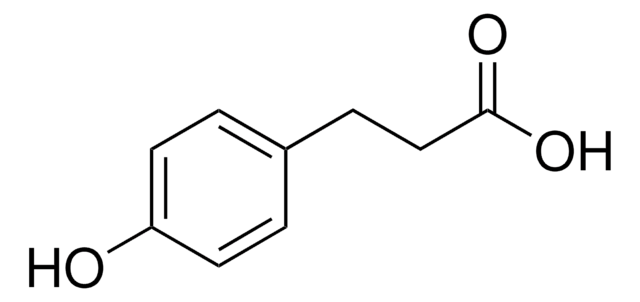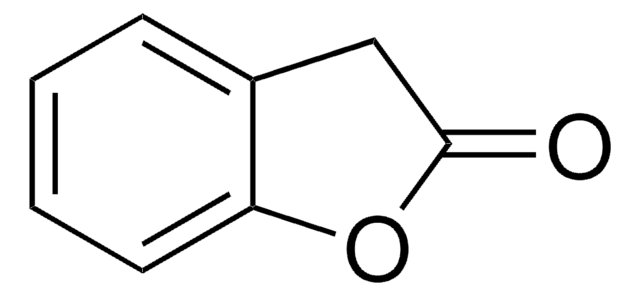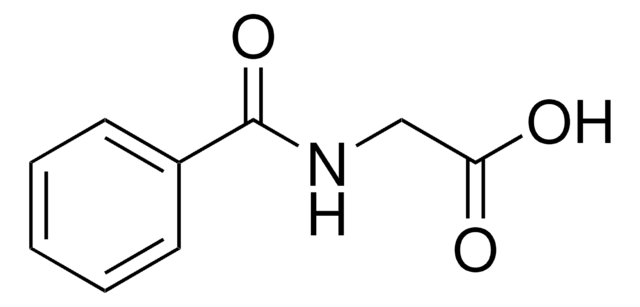H49804
2-Hydroxyphenylacetic acid
ReagentPlus®, 99%
Sinónimos:
(2-Hydroxyphenyl)acetic acid, (o-Hydroxyphenyl)acetic acid, 2-(2-Hydroxyphenyl)acetic acid, 2-(2′-Hydroxyphenyl)acetic acid, 2-HPAA, 2-Hydroxybenzeneacetic acid
About This Item
Productos recomendados
Línea del producto
ReagentPlus®
Ensayo
99%
mp
145-147 °C (lit.)
cadena SMILES
OC(=O)Cc1ccccc1O
InChI
1S/C8H8O3/c9-7-4-2-1-3-6(7)5-8(10)11/h1-4,9H,5H2,(H,10,11)
Clave InChI
CCVYRRGZDBSHFU-UHFFFAOYSA-N
¿Está buscando productos similares? Visita Guía de comparación de productos
Información legal
Palabra de señalización
Warning
Frases de peligro
Consejos de prudencia
Clasificaciones de peligro
Eye Irrit. 2 - Skin Irrit. 2 - STOT SE 3
Órganos de actuación
Respiratory system
Código de clase de almacenamiento
11 - Combustible Solids
Clase de riesgo para el agua (WGK)
WGK 3
Punto de inflamabilidad (°F)
Not applicable
Punto de inflamabilidad (°C)
Not applicable
Equipo de protección personal
dust mask type N95 (US), Eyeshields, Gloves
Elija entre una de las versiones más recientes:
¿Ya tiene este producto?
Encuentre la documentación para los productos que ha comprado recientemente en la Biblioteca de documentos.
Nuestro equipo de científicos tiene experiencia en todas las áreas de investigación: Ciencias de la vida, Ciencia de los materiales, Síntesis química, Cromatografía, Analítica y muchas otras.
Póngase en contacto con el Servicio técnico









